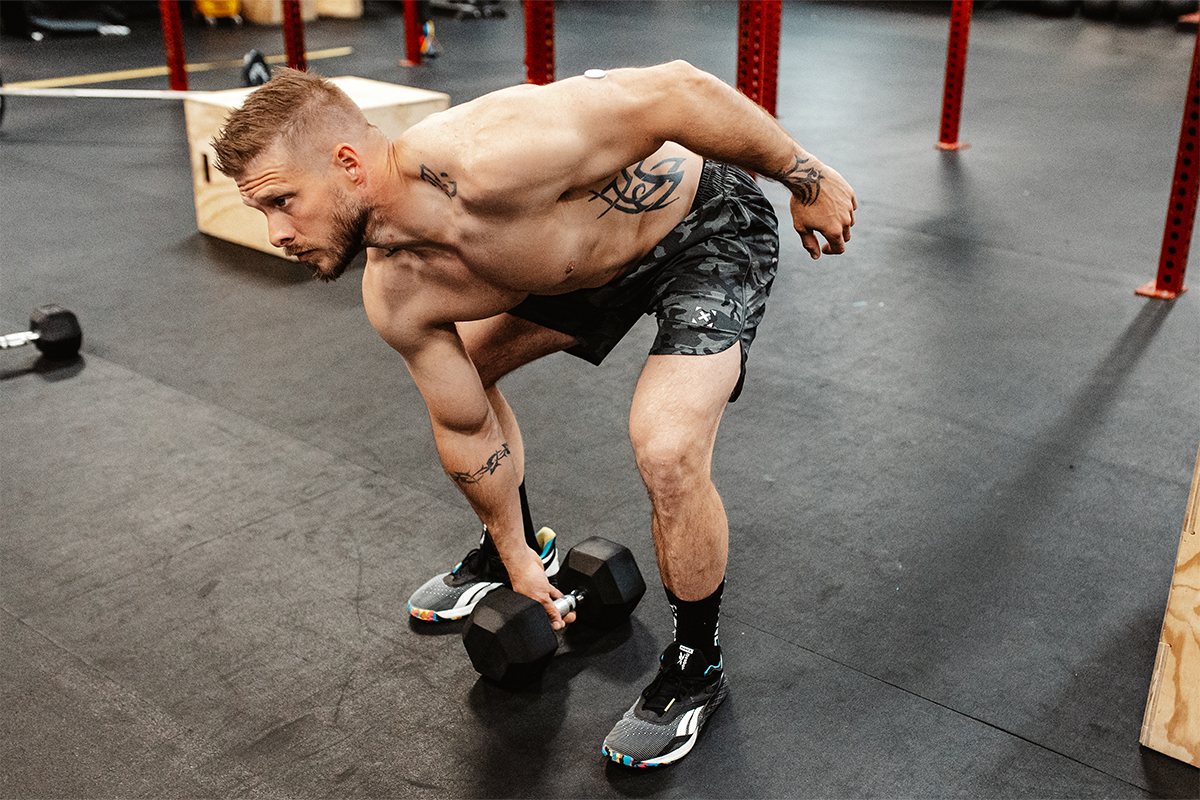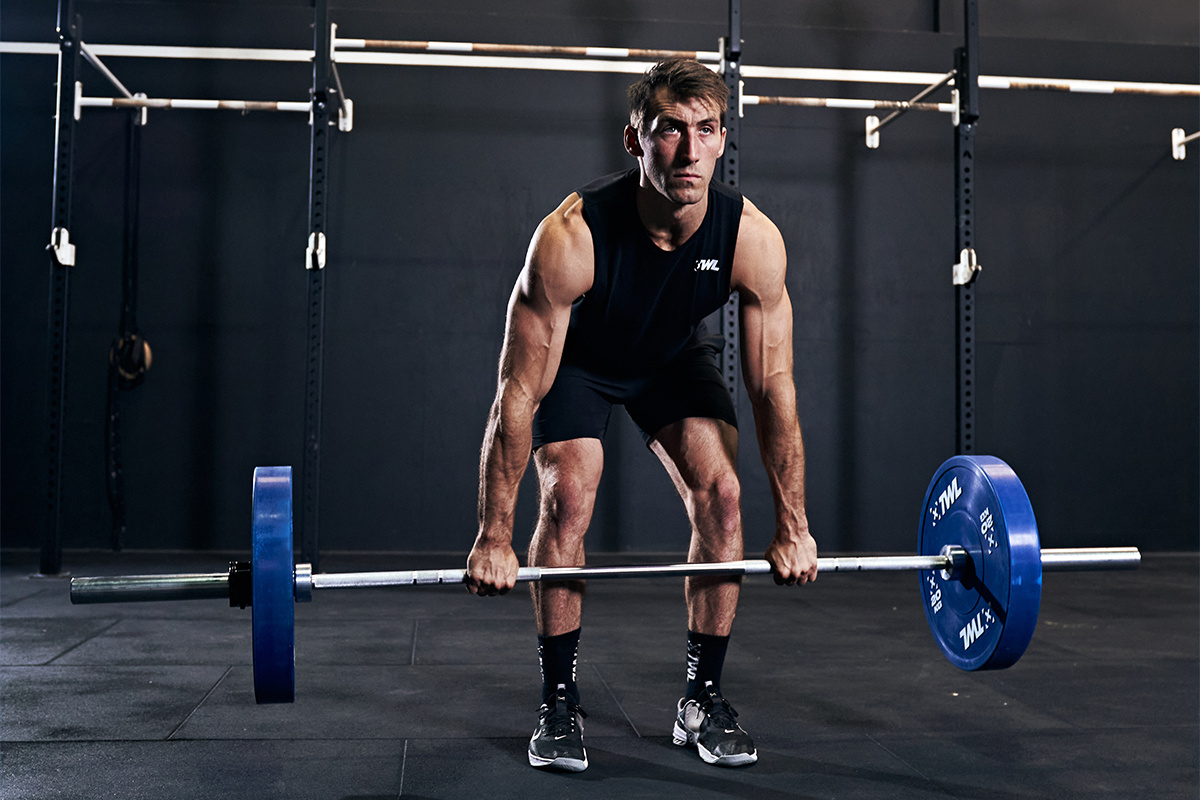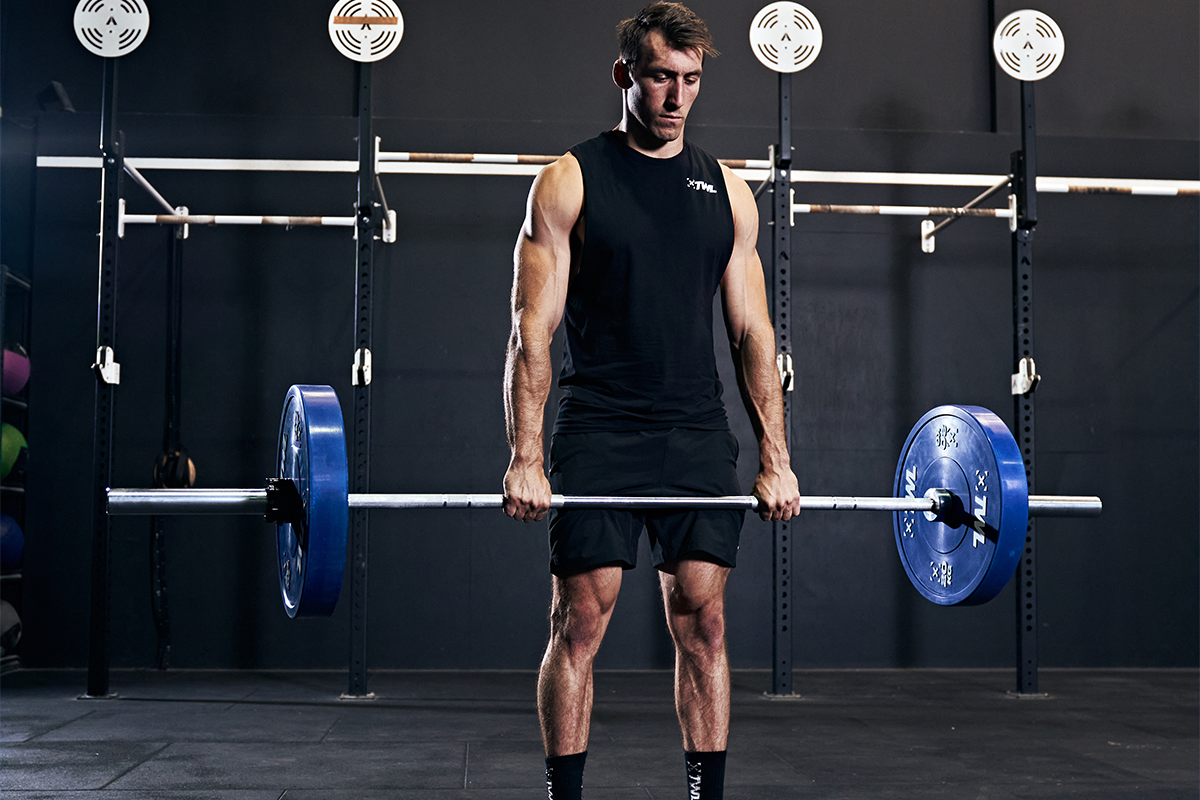There are all sorts of exercises to supplement your deadlift training. The stiff-leg deadlift puts an interesting spin on things, as does the sumo deadlift. Another variation is the single-leg deadlift. Let’s talk about what it is, how to do it, and what the benefits are!
What is the Single-Leg Deadlift?
The single-leg deadlift still accomplishes the main purpose of the traditional deadlift: It’s another way to pick the weight up off the ground. In this case, however, you’re doing it on one leg. Essentially, you stand on one foot, lift the other behind you, and hinge at the hips to lower your torso to the ground.
How about we go into a little more detail?
How to Perform a Single-Leg Deadlift
Let’s break this down into a few simple steps. First, let’s assume that you’re trying this without weights to get comfortable with the movement, first (which is often a smart idea!). Here’s how you do it:
- Start by standing on one leg with the other leg extended out behind you. Try to keep both legs mostly straight.
- Hinge at the hips and reach down toward the floor with both hands, while simultaneously lifting your free leg up behind you. Try to form a straight line from your shoulders to the foot in the air.
- Reverse the motion by extending at the hips and standing up tall.
This is what it looks like:
Now, once you’re comfortable with the movement, you’ll probably want to add weight. This is how you’re really going to build up strength in your posterior chain.
In that case, you can hold a single dumbbell or kettlebell in your hands, or one in each hand. Then, you perform the movement in the same manner.
Shop Now
It’ll look something like this:
What are the Benefits of the Single-Leg Deadlift?
As you probably guessed, you won’t lift nearly as much with this exercise as you do with the traditional deadlift. However, the single-leg deadlift still offers a number of benefits.
- It works the entire posterior chain, including the lower back, glutes, and hamstrings. You’ll even feel a burn in your lats and spinal erectors.
- It’s an excellent unilateral exercise that’ll help you determine if one side is significantly stronger than the other (which is important to correct so you can avoid injury).
- It improves your balance, coordination, and body awareness.
So, while the single-leg deadlift might not look as “intense” as the standard lift, you’ll still reap the rewards if you consistently rehearse it.
7 Tips for Improving Your Single-Leg Deadlift
As always, technique matters. However, you might find that this exercise feels a little more awkward than normal — and that’s okay! Let’s go over some tips to improve your positioning, alignment, and performance.
- Only hinge forward as far as you can keep that straight line from your shoulders to your foot. If your foot can’t go any higher, then hit the pause button on your upper body, too.
- Keep your hips squared. In other words, try to avoid having them tilt or open in one direction or the other.
- If your base knee is super wobbly, put the weight down and rehearse without it.
- If you need extra assistance, lightly place your fingers on a solid surface — like the wall or the squat rack — for balance as you perform the movement. Just be sure not to rely on that surface too much.
- If you’re using only one weight, hold it in the hand that’s opposite the base leg. In other words, if you’re standing on your right leg, hold the weight in your left hand, and vice versa.
- Slow and steady wins the race. Don’t race this exercise! If you do, you’ll reduce your time under tension and won’t experience nearly the same engagement.
- Keep your head, spine, and neck neutral. You shouldn’t be forcing your gaze up or down. At the start of the movement, you’ll be looking straight ahead. At the bottom of the movement, you should be looking down at the ground.
Can You Do Single-Leg Deadlifts with a Bad Back?
Some people will argue that deadlifts are dangerous because they put too much pressure on your back and leave your spine in a vulnerable position. The truth is that just about anything can be risky if you do it the wrong way.
One rule of thumb goes without saying: If it hurts, stop. Discomfort is normal and even healthy, but pain is not. Pain is indicative of a bigger issue.
If you’re a generally healthy person, you should be able to perform the single-leg deadlift without any issues. If you have past or present back problems, it never hurts to talk to a coach or health professional you trust, before trying the exercise. And remember, you can always start with the bodyweight version to get a better feel for things.
Also, as a side note, if you do experience pain, make sure to explore any issues in both your back and your hips, since your hips play a big role in this movement.
As always, we encourage you to warm up before training, in general. In the case of the single-leg deadlift, you might find it beneficial to do a few psoas stretches. Always work on hip mobility (especially if you sit a lot), consider banded hip exercises, and get your back ready for action, too.
Be sure to check out our full selection of resistance bands. These are excellent for warming up and challenging your muscles. They’re low-impact and you can bring them anywhere, too.
Shop Now
Even if you have to start with lighter weights — or no weight! — don’t let that discourage you. Rest assured that the single-leg deadlift is still giving you a good workout. Give it a shot and let us know what you think.

















